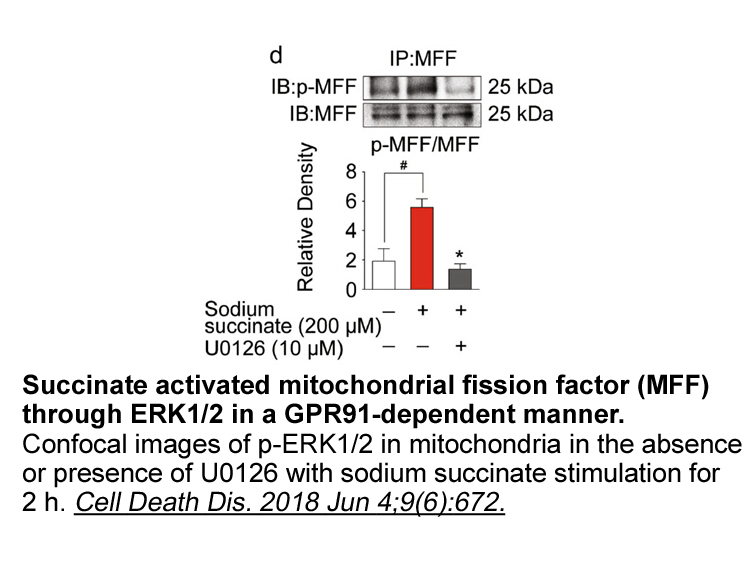Archives
- 2025-12
- 2025-11
- 2025-10
- 2025-09
- 2025-03
- 2025-02
- 2025-01
- 2024-12
- 2024-11
- 2024-10
- 2024-09
- 2024-08
- 2024-07
- 2024-06
- 2024-05
- 2024-04
- 2024-03
- 2024-02
- 2024-01
- 2023-12
- 2023-11
- 2023-10
- 2023-09
- 2023-08
- 2023-07
- 2023-06
- 2023-05
- 2023-04
- 2023-03
- 2023-02
- 2023-01
- 2022-12
- 2022-11
- 2022-10
- 2022-09
- 2022-08
- 2022-07
- 2022-06
- 2022-05
- 2022-04
- 2022-03
- 2022-02
- 2022-01
- 2021-12
- 2021-11
- 2021-10
- 2021-09
- 2021-08
- 2021-07
- 2021-06
- 2021-05
- 2021-04
- 2021-03
- 2021-02
- 2021-01
- 2020-12
- 2020-11
- 2020-10
- 2020-09
- 2020-08
- 2020-07
- 2020-06
- 2020-05
- 2020-04
- 2020-03
- 2020-02
- 2020-01
- 2019-12
- 2019-11
- 2019-10
- 2019-09
- 2019-08
- 2019-07
- 2019-06
- 2019-05
- 2019-04
- 2018-07
-
The transcription factor activator protein
2024-09-13

The transcription factor activator protein-1 (AP-1) is a redox-sensitive transcription factor whose activity is controlled by agents that perturb intracellular thiol concentrations [10,11]. AP-1 is mainly composed of Jun, Fos, and ATF protein dimers [12,13]. AP-1 mediates the regulation of numerous
-
Intracellular Signaling Cascades From ligand sensitization t
2024-09-13

Intracellular Signaling Cascades. From ligand sensitization to translation of genes, all cellular processes are dependent on the intracellular levels and activity of partners involved in the signaling pathway. These signaling events lead to critical post-translational modifications including phospho
-
Active SI behavior was dose dependently
2024-09-12

Active SI behavior was dose-dependently affected by PACAP treatment (F3,25 = 14.42, p pcr kit 1 week later (F3,20 = 8.93, p PACAP depended on significant dose × day interactions for correct responding (F12,76 = 3.42, p hypothesis that PACAP causes disruptions in posterror adjustments that are simil
-
To investigate further the clinical and
2024-09-12

To investigate further the clinical and mutational spectrum associated with -related dyskinesia, we here performed a screen in a large series of patients affected with an unexplained hyperkinetic movement disorder, resulting in the identification of 2 pediatric patients presenting with a novel pheno
-
br Conflict s of interest br Retinopathy of prematurity
2024-09-12

Conflict(s) of interest Retinopathy of prematurity (ROP) is a leading cause of childhood blindness Retinopathy of prematurity (ROP) is a disease of premature infants which disrupts normal retinal vascularization (Fleck and McIntosh, 2008). With increased survival of extremely premature infants
-
Although effects of low concentrations of
2024-09-12

Although effects of low concentrations of agonist were not as thoroughly documented for heteromeric receptors such as the major RAS2410 α4β2 nAChR, a similar mechanism of action was described to explain the potentiation of these receptors with low concentrations of acetylcholine-esterase-inhibiting
-
Our previous work fails to show
2024-09-12

Our previous work fails to show any maternal effect with blockade of 5-HT2A receptor, as acute and repeated treatment of MDL100907 does not alter maternal behavior at the behaviorally active doses (Chen et al., 2014). In the present study, MDL100907 pretreatment attenuated the maternal disruptive ef
-
The synthetic route to M developed by Rice was utilized
2024-09-12

The synthetic route to M100907 developed by Rice was utilized, however, the chiral resolution was carried out at an earlier stage to provide the possibility of introducing different substituents onto the piperidinyl group. The conditions for this resolution were different from previously reported.
-
Phenyl sulfate br Innate immune mechanisms that confront vir
2024-09-12

Innate immune mechanisms that confront viral infection Autophagy induction by virus sensing Antiviral xenophagy and virophagy The presence of viral particles within autophagosomal structures has been visualized in only rare instances. This is the case for HSV-1 when it is devoided of ICP34.
-
PF also a dual Aurora A and Aurora
2024-09-12

PF-03814735, also a dual Aurora-A and Aurora-B inhibitor, was administered in a phase I dose escalation study in a 3-weekly Myriocin for 5 or 10 consecutive days [69], [70]. To date 25 patients have been included in 7 dose levels (5–100mg/day for 5 days). Using the 5-day schedule the MTD was defined
-
In many cells AR mediated
2024-09-12

In many Paeonol sale α1-AR mediated activation of PLC has been shown to be the downstream process for NA-induced signalling. The activated PLC initiates subsequent signalling by breakdown of PIP2 to IP3 and DAG (Fisher and Agranoff, 1987) and the process continues. To confirm if such mechanism exist
-
Comparison of the GLUT positive
2024-09-12

Comparison of the GLUT1-positive plus ACLY negative group with the GLUT1-negative plus ACLY positive group indicated no significant difference with respect to disease-free survival and overall survival. However, some obvious differences in histological types were found in their formation. A previous
-
Two critical determinants of receptor trafficking are found
2024-09-12

Two critical determinants of receptor trafficking are found within the GABAB1 cytoplasmic tail: the di-leucine internalization signal (EKSRLL) (Margeta-Mitrovic et al., 2000, Restituito et al., 2005) and the ER retention signal (RSRR) (Calver et al., 2001, Margeta-Mitrovic et al., 2000, Pagano et al
-
br Eprosartan The AT R antagonist eprosartan is approved for
2024-09-11

Eprosartan The AT1R antagonist eprosartan is approved for the treatment of essential Pertussis Toxin and may be administered using a convenient once-daily regimen. The drug is a well-tolerated and effective antihypertensive agent with benefit in the secondary prevention of cerebrovascular events
-
In a recent issue of Minokoshi
2024-09-11

In a recent issue of , Minokoshi and colleagues have added more light to our understanding of the role of hypothalamic AMPK in the regulation of energy balance. Previous seminal work from the same group suggested that AMPK in the PVH might be involved in the modulation of feeding . Here, they show
16194 records 88/1080 page Previous Next First page 上5页 8687888990 下5页 Last page